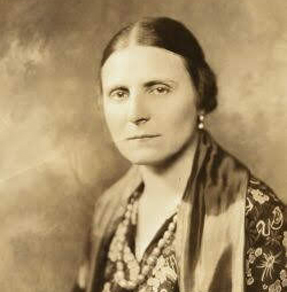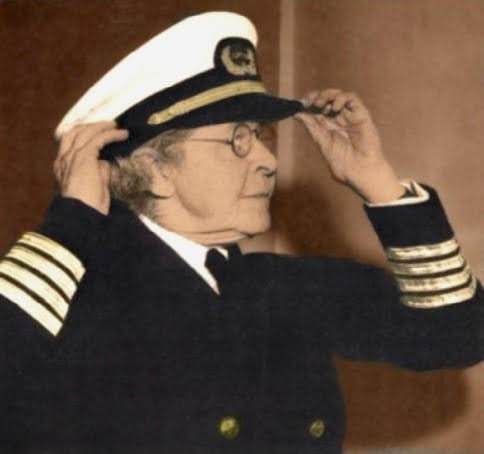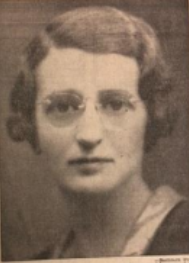Anna Murray Douglass (c. 1813-1882), born in freedom in Maryland, secured funds for enslaved Frederick to escape to New York, where the couple would marry before moving to New Bedford. While Frederick Douglass was away on the anti-slavery lecture circuit, Anna cared for their family and earned funds as a seamstress, laundress and shoemaker. After leaving New Bedford, Anna made her home a comfortable passing spot for many freedom seekers along the Underground Railroad.
Anna Murray (c. 1813-1882) was born around 1813 in Denton, Caroline County, Maryland to two formerly enslaved persons, Bambarra and Mary Murray. According to her daughter Rosetta, Anna Murray’s parents were previously owned by Governor Spriggs. Anna was the seventh child of twelve children born of this union, seven were born enslaved and four were born free. Anna was the first of the family’s children that was freeborn. When Anna was seventeen years of age, she and three of her siblings, Elizabeth, Philip, and Charlotte, left their parent’s home in Caroline County and moved to Baltimore, Maryland. The four Murray siblings applied for certificates of freedom in 1832 which granted them the opportunity to leave the county and state for work.
When Murray arrived in Baltimore, she found employment at the home of a French family called Montell. While in Baltimore, she met an enslaved man, Frederick Augustus Washington Bailey whom she would later marry. Frederick and Anna met at church-sponsored outings of lectures and musical performances. Frederick, like Anna, was from Maryland’s Eastern Shore, where slavery was alive and prospering. Frederick Bailey, who was hired out in Baltimore by his master, would eventually escape from Maryland with the assistance of funds secured by Anna Murray. Anna sold her feather bed to pay the expenses for Frederick’s escape. The expenses included a train ticket to New York and a sailor’s uniform Anna sewed as a disguise. When Frederick fled Baltimore for New York in 1838, he found shelter with David Ruggles, a well-known Underground Railroad agent who took Frederick under his wing. Once safely in New York, Douglass wrote a letter to Anna informing her of his safe arrival and arranging for her to join him; she joined him in New York a week later. Anna Murray married Frederick in a ceremony presided over by another formerly enslaved fugitive from Maryland, Rev. James W. C. Pennington (Jim Pembroke). The young couple was married in the home of New York abolitionist David Ruggles.
From New York the young couple relocated to New Bedford, Massachusetts, where it was felt that Douglass’s skills in the maritime trades as a caulker would be a benefit to those hiring for the whaling and shipbuilding trades. Once in New Bedford the young couple was helped into their new life by African American business owners and abolitionists, Nathan and Mary Johnson. The Johnson home was a safe house for many freedom seekers escaping southern enslavement. The Johnsons and the community of free Blacks in the city helped Frederick find work and a place to live. It is also in New Bedford that Frederick gains his name, Douglass, after a book Nathan Johnson is reading, The Lady of the Lake by Sir Walter Scott.
Anna earned her living at domestic services as a seamstress, laundress, and a shoemaker and mender. Frederick picked up odd jobs shoveling coal and also sawing wood. Initially Douglass tried to work on New Bedford’s docks, but White workers refused to work with him and other Black men. Generally though, New Bedford’s more tolerant racial environment allows the couple to experience the life of a free born couple.
The Douglasses had five children, Rosetta (b. 1839), Lewis (b. 1840), Frederick (b. 1842), who were born in New Bedford, and Charles (b. 1844), and Annie (b. 1849) who were born in Lynn. Anna and Frederick eventually left Massachusetts and moved their family to Rochester, New York. While Frederick began his climb as an abolitionist orator, Anna cared for their children. The gulf between Anna and Frederick widened over the years; she could barely read and write and was rarely a part of his activist life and growing circle of prominent White and Black abolitionist colleagues. Anna believed that her role was to care for the children and her husband which she did admirably while Douglass was often away on the anti-slavery lecture circuit. She cared for her family earning funds as a seamstress and with other domestic talents.
Anna made her home a comfortable passing spot for many freedom seekers passing through on their way to Canada. In later years her daughter, Rosetta Douglass Sprague, wrote that Anna Murray Douglass was one of the first agents to work with the Underground Railroad in Rochester. Anna was often left to mind the house and finances while her husband was gone for long periods of time during his exile in England and on various speaking engagements in his work for the Anti-Slavery Society. Nevertheless, there were always people at their home. Her husband’s friend Julia Griffiths stayed with the family for a while. Anna’s sister Charlotte Murray, who left Caroline County with her, also lived with the Douglass family during the 1850s. However, times were sometimes hard. Sadly, the Douglass’ youngest child Annie died March 13, 1860.
In 1872, Anna Murray and Frederick Douglass moved to Washington, DC, where they purchased two row houses located at 316 and 318 A Street NE. In 1877, the Douglasses moved to a house called Cedar Hill in the Anacostia neighborhood of Washington, DC where they lived for the remainder of their lives. Cedar Hill was purchased with money that Anna saved from her years as a shoe mender. A few years later, in 1882, Anna became ill when she was stricken with paralysis. Anna Murray Douglass died August 4, 1882 at Cedar Hill and was buried at Graceland Cemetery in Washington, DC. Anna was eventually reinterred at Mount Hope Cemetery in Rochester, New York next to her husband Frederick. In later years, there was a women’s club named in her honor, the Anna Murray Douglass Women’s Christian Temperance Union.
Through all their trials and tribulations – Frederick and Anna Douglass were to stay married for 44 years.
Reprinted from Maryland State Archives. “Anna Murray Douglass.” Maryland State Archives, MSA SC 5496-051245, 30 Mar. 2012, https://msa.maryland.gov/megafile/msa/speccol/sc5400/sc5496/051200/051245/html/051245bio.html.
Edited by Lee Blake, New Bedford Historical Society
Additional information from
-
Sprague, Rosetta Douglass. Anna Murray Douglass, My Mother As I Recall Her. 1900. Library of Congress, https://www.loc.gov/item/mfd.02007/.
![[Anna Murray Douglass], c. 1860, Painting, Courtesy of National Park Service Painting of abolitionist Anna Murray Douglass](https://historicwomensouthcoast.org/wp-content/uploads/2021/10/Anna-Murray-Douglass-300x300.jpg)




